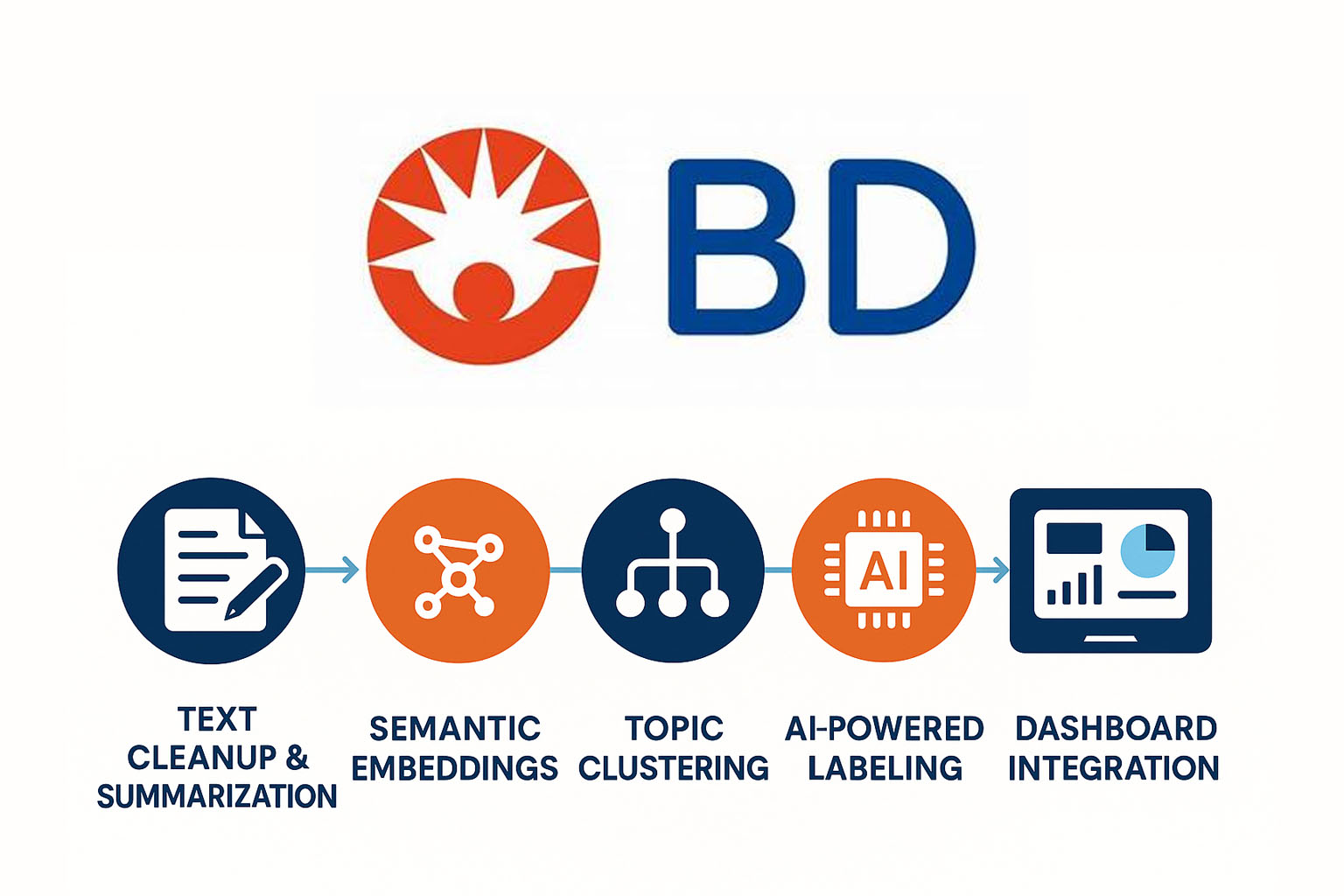Overview
Becton Dickinson (BD), a global medical technology leader, receives hundreds of thousands of service records each year related to their MMS (Medication Management Solutions) dispensing products. These records, typically written in free-text, often lack structure and specificity, making it difficult to trace root causes or identify actionable trends.
To bridge this gap, Analytica Consulting developed an AI/ML-powered solution that transforms these vague, narrative-rich service records into structured, actionable failure insights. The result: more than 1,000 new, granular failure modes identified, enabling BD to detect patterns, streamline diagnostics, and improve product reliability at scale.
The Challenge: Hidden Insight in Unstructured Data
Imagine a technician logs a service issue as “drawer won’t open.” Without context (what drawer? what model? what symptoms?), it is nearly impossible to spot systemic issues or guide engineering teams toward the right fix.
BD’s legacy approach grouped service records under broad failure codes, which, while useful for aggregation, missed the deeper diagnostic detail buried in these free-text reports. What BD needed was an intelligent way to analyze their data at scale.
The Solution: A Modular AI/ML Pipeline
Analytica designed a custom NLP and machine learning pipeline that processed more than 307,000 service records and surfaced 1,082 unique, meaningful failure categories. The project combined industry-leading open-source tools with advanced AI to create a repeatable, scalable framework.
Key Innovations:
- Text Cleanup and Summarization: The Analytica team applied Amazon Bedrock’s LLaMA 3 model to extract key failure information from noisy service descriptions—standardizing language and improving clarity.
- Semantic Embeddings: Using Hugging Face’s Stella 1.5B embedding model, each failure description was converted into a high-dimensional vector that captures contextual meaning—enabling semantic comparison.
- Topic Clustering with BERTopic: By applying dimensionality reduction (UMAP) and density-based clustering (HDBSCAN), we grouped similar failures together into coherent clusters.
- AI-Powered Topic Labeling: LLaMA 3 then interpreted each cluster’s meaning and generated concise, human-readable labels, making the data usable by engineering and quality teams.
- Dashboard Integration: Results were delivered through Power BI dashboards with drill-down functionality, enabling both high-level trend analysis and record-level traceability.
The Impact: From Clusters to Clarity
This new AI-driven framework delivered results that BD’s teams could act on:
- Coverage: 93.8% of in-scope product complaints analyzed, spanning 12 product groups and 114 assemblies
- Precision: Over 1,000 new failure codes surfaced, mapped back to specific components, symptoms, and actions
- Speed: BD teams can now navigate from a summary failure trend to the underlying service record in seconds
- Extensibility: The system can be rerun with new data and adapted for future enhancements or expanded to other product lines
Why It Matters
Service data is one of the richest and most underutilized sources of product insight. By turning unstructured narratives into structured intelligence, BD can proactively identify weak points, resolve issues faster, and continue delivering reliable, life-critical technologies to the market.
This project not only improves visibility and traceability today, it lays the foundation for a smarter, more responsive diagnostics system tomorrow.




